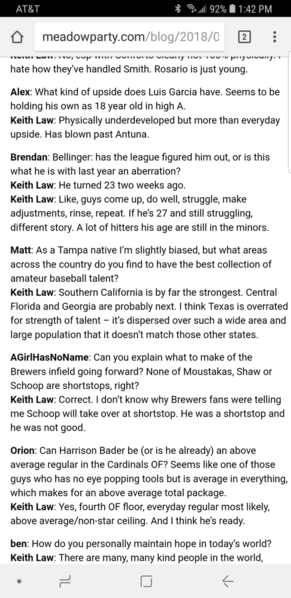I know no one can evaluate a player based on posts here. But I could use some advice:
My son is going to Headfirst in August. He is a 2020 RHP and his goal is a high-academic school. Several coaches have told him he could potentially play at a lower-level D1, but he has been thinking D3 because his primary goal is getting into the best academic school he can, rather than the best baseball school.
Son's coach recently made some changes to his delivery and he has struggled to incorporate those. His velocity is up, but he has not performed well this summer (far too many walks).
At the WWBA earlier this week, things finally clicked: touched 86-87 on several pitches and averaged 83 mph; 2 Ks per IP. This is the fastest he has thrown by a good bit. Still too many walks, but they were down and he was effective. I know these numbers don't make him a P5 prospect. But in addition to D3 HA schools, should he also target the Ivies and/or Patriot League (and similar)? He's 6'1", built like a tight-end, won't get any taller. His pitching coach, who is the best around these parts, says there is still room to increase his velo. I'm not asking "will he get a D1 offer?" but just "are these numbers likely to get a HA D1 coach's interest"? He'll continue to target HA D3s in any case. I know he has nothing to lose by sending emails to D1 coaches; but I'm trying to help him set realistic expectations and goals.


